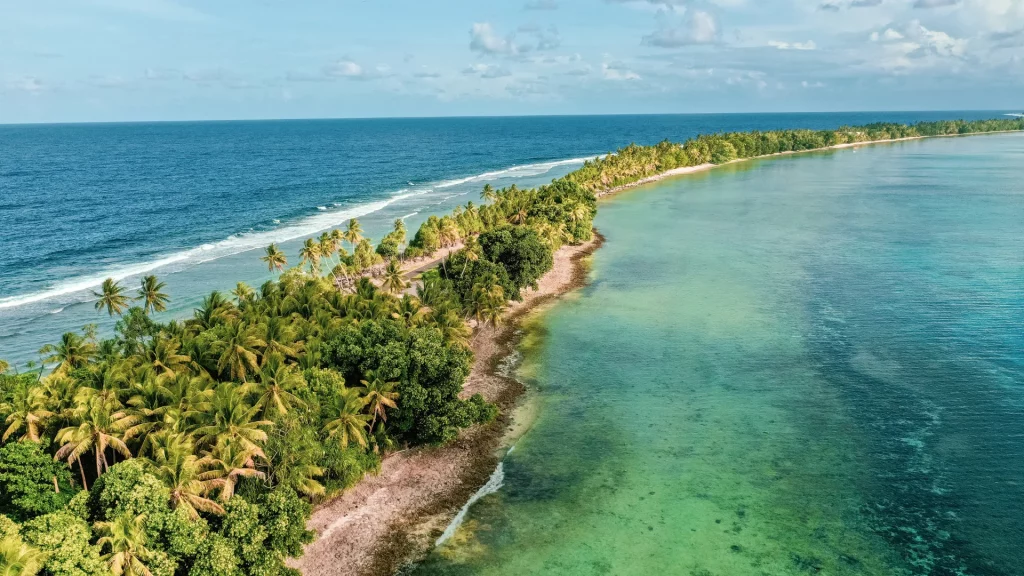The United States has also increased its regional diplomatic presence and security in the Pacific
Papua New Guinea (PNG), a country in the southwestern Pacific is becoming a buzzing area with world leaders rushing to hold diplomatic discussions. The China–US struggle to have influence over the Pacific regions has already grabbed the world’s attention but now, it’s not just them. The arrival of the leaders of other countries suggests a broader interest in the once-ignored region. Indian prime minister Narendra Modi visited Papua New Guinea in May and later two warships were docked in PNG by August. Indonesian President Joko Widodo also visited Papua New Guinea in July. And it’s not just PNG attracting the leaders.
French President Emmanuel Macron visited New Caledonia before he visited Papua New Guinea. The Pacific also saw Korea-Pacific Islands Summit being hosted in May for the first time by South Korea and the summit invited 12 leaders from the region to discuss maritime cooperation, energy security, climate change, and many other pressing issues. Delegates from the middle eastern countries also held diplomatic discussions and agreed to bolster their cooperation in environmental protection, investments, and various other sectors. So why is there a newfound interest in the Pacific Island?
The Reasons:
Countries like South Korea, Indonesia, and India are seeking into having an influence as the region is an essential hub for global shipping channels and critical to the economy of the oceanic region. According to experts, these countries are mainly focused on safeguarding and defending their national interests than siding with any of the superpower nations. This would, however, help the Pacific Island nations to choose from a number of partners and they can conveniently avoid being caught in the rift between the US and China.
The Pacific Island nations include the Solomon Islands, Cook Islands, Niue, Micronesia, Kiribati, Nauru, the Marshall Islands, Papua New Guinea, Fiji, Palau, Tonga, Tuvalu, Samoa, and Vanuatu. All these nations have been close allies of the US, United Kingdom, Australia, and New Zealand. Australia, New Zealand, French Polynesia, and New Caledonia are members of the Pacific Island Forum (PIF).
The PIF was formed to promote the shared interest of the region globally in 1971. Things are not favourable currently as geopolitical tensions take over the nations occasionally. Some Pacific Island states like Nauru, Marshall Islands, Palau, and Tuvalu favour Taiwan more than China. Earlier these numbers were larger, but China promised more trade and investment opportunities to break away from Taipei’s partners.
The United States has also increased its regional diplomatic presence and security. Other nations are also trying to deepen their relationship and presence in the region. For the nations that are looking to emerge as regional powers, the geography of the Pacific Island makes them valuable partners. Let us now look at some of the nations that are rushing to have good diplomatic relations with the Pacific islands.
- India
India’s Modi visited Papua New Guinea recently and this was not his first visit to the region and the renewal of the relationship is not all about countering China. When we look at India, climate change is one of the main reasons for its relationship with the region. Back in 2014, Modi announced a $1 billion climate adaptation fund for the region and India gives $200,000 in aid annually to the Pacific nations. Being the world’s largest importer of palm oil, India imports large volumes of kitchen staples from PNG. It is also the second-largest buyer of PNG’s palm oil in 2021.
- South Korea
The Pacific Island nations have been in the interest books of South Korea for quite some time now, especially in terms of foreign policies. Only 0.3 per cent of the country’s imports came from the Pacific Island nations. But Seoul is now looking for a multipolar approach and is looking to make a footmark in the region. South Korea can support the region through loans, and technologies, mainly climate friendly to attain a low-carbon transition.
- Indonesia
Indonesia hosted the first Indonesia Pacific Forum for Development in Bali last December. Like Modi, Widodo, the president of Indonesia, had previously traveled to the area. He paid Papua New Guinea a visit in July. In 2015, he also visited Port Moresby; in 2022, the leader of the nation of the Pacific Islands paid a visit to Jakarta.
As geopolitical conflicts are increasing, most Pacific Island nations are trying to balance their relationship between US and China carefully in order to avoid getting caught between the issues.
